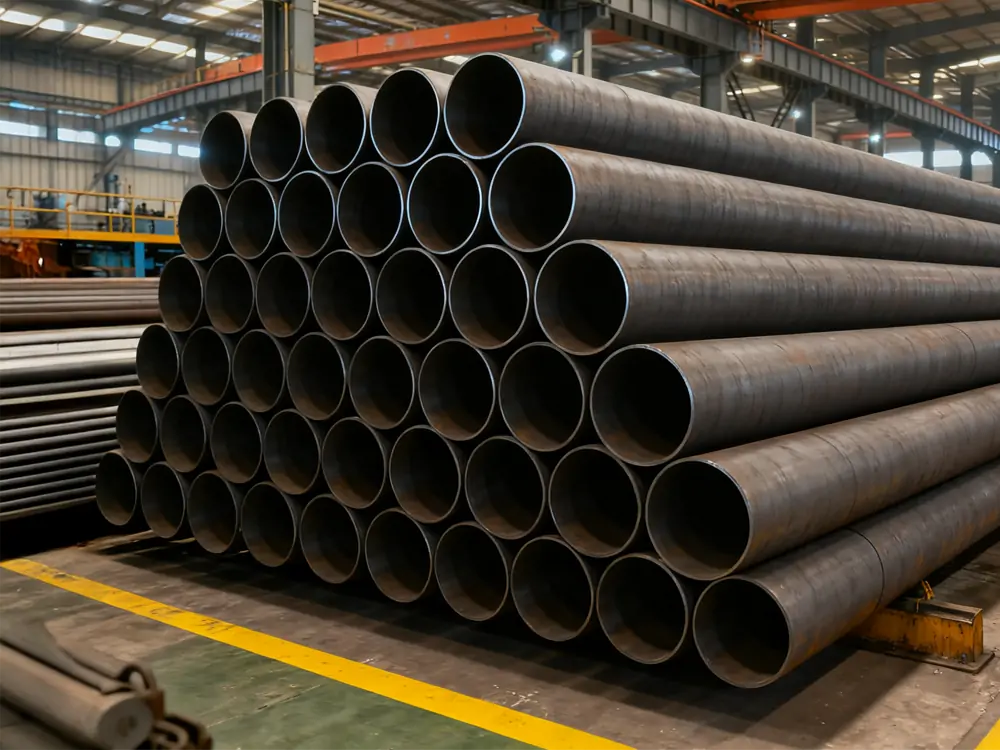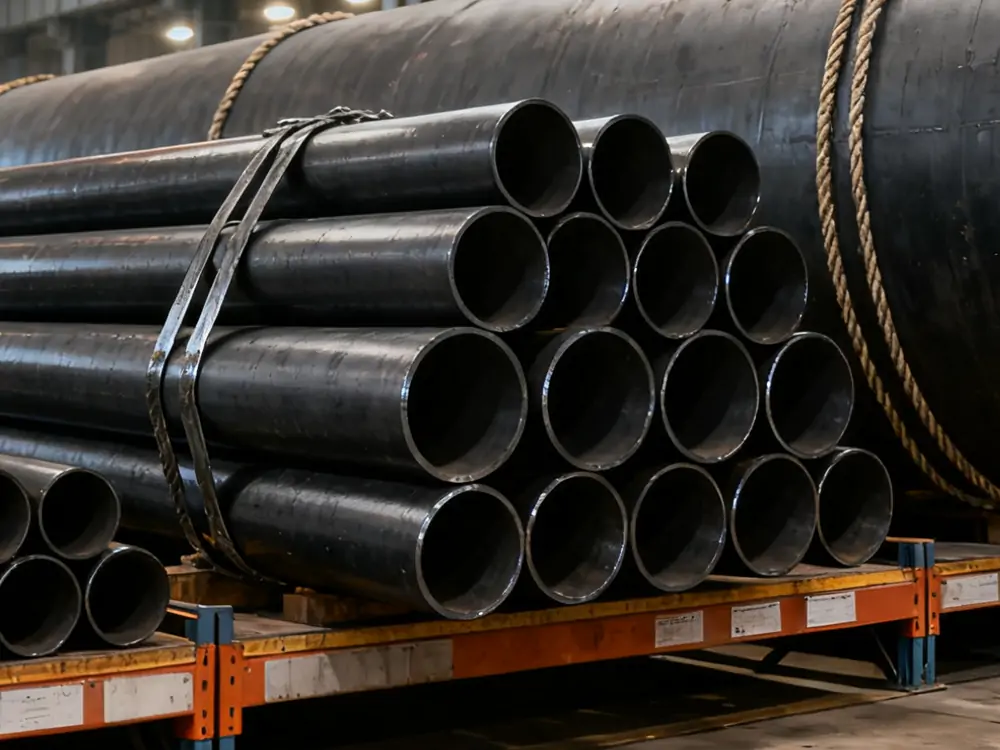Introduction
Manufacturers use steel pipes for modern infrastructure, automotive, and transport purposes. These pipes are powerful and can bear high temperatures and pressure. These pipes are used in skyscraper construction, deep pipelines, and other applications. The manufacturer designs different types of steel pipes to withstand specific conditions, whether moving fluids, bearing loads, or operating under pressure.
Several aspects, such as the material composition, mode of production, and the application purpose, determine the selection of the appropriate type. Knowing these differences enables engineers and buyers to make sound choices. This will guarantee efficiency and long-term service. In this article, you will get information about the different kinds of steel pipes and their applications in other sectors.
Seamless Steel Pipes for High Flow Rates

Seamless steel pipes are made without any welds, which is why they are called seamless.
- Seamless steel pipes are used for high flow rates and high-pressure operation, such as 10 MPa.
- They have smooth interior surfaces that decrease friction. Thus, facilitates the flow of fluids and gases.
- Perfect for sectors including chemical processing, electricity generation, and oil and gas that must run constantly.
- The schedule of the steel pipes decides the flow rates, pressure, and temperature resistance.
- The temperature resistance is around (450 °C) and (650 °C).
- Using seamless steel pipes will help prevent blockages, leaks, and pressure loss. It will help maintain the high flow rates.
- Precision production provides even wall thickness and dimensional accuracy.
- Corrosion resistance increases service life in severe conditions.
- Ideal when carrying large quantities of liquid or gas, and strength and efficiency are required.
Welded Steel Pipes for a Range of Uses
As the name indicates, the welded steel pipes are made by welding the sheets into rolls.
- They can be personalized and are reasonably priced. They are useful in practically every field.
- People use these welded pipes in water transportation and many construction projects.
- They can bear temperatures that are below 200 degrees Celsius.
- Welded steel pipes can withstand a low pressure of 6 MPa due to their structure.
- The quality of welded steel pipes has improved compared with that of seamless steel pipes in applications.
Use-Specific Carbon Steel Pipes
As carbon concentration rises, so does the strength and longevity of steel pipes. The carbon content ranges from 0.08 to 0.99 percent. The specific uses of carbon steel pipes are as follows:
- People in the construction industry use carbon-steel pipes to create building frameworks.
- The high strength and the affordability make it ideal for use in industrial as well as domestic projects.
- They are very durable and corrosion-resistant. They can therefore be utilized in the chemical sector.
- The carbon content of the steel pipes decides the ductility, and you can mold it into various shapes.
- The normal range is 400-450 °C for operating carbon steel pipes.
To get Resistant to Harsh Weather Conditions, use Galvanized Steel Pipes
The process of galvanizing involves electrolytically coating the steel surface with zinc.
- Galvanized steel pipes have a 50-year lifespan.
- The coating makes the steel pipes corrosion-resistant and prevents the formation of mineral deposits.
- Plumbing systems use galvanized steel pipes for cost-effectiveness.
Bright and Shiny Stainless Steel Pipes for Cleanrooms
- The user can achieve both functionality and aesthetics with stainless steel pipes.
- They have a finished appearance and rust resistance.
- The use of polished stainless steel pipes in the kitchen and bathrooms makes them more attractive.
Durable Black Steel Pipes

- The steel pipes have a coating of dark iron oxide, making them appear black.
- The users use them in water, gas, air, and steam transportation.
- It is appropriate for use in firefighting sprinkler systems because of its heat resistance.
- These pipes do not have much corrosion resistance, but they are durable.
Structural Steel Pipes for Load-Bearing Columns
- The structural steel pipes have a high carbon content of 06 % to 1.5%.
- These pipes have a high load-bearing capacity. That is why people use them in the construction of bridges, ships, and the petrochemical industry.
- Manufacturers use Submerged Arc Welding (SAW)or Electric Resistance Welding (ERW) for making structural steel pipes.
- People can utilize the structural frameworks of these steel pipes. They use them when creating buildings, bridges, and staircases.
Alloy Steel Pipes for Extreme Conditions
- The addition of nickel, sulphur, maganease, and chromium increases the corrosion resistance of the steel pipes.
- The steel pipes are stronger and more stable because of their high carbon content. It made them ideal for use in high-pressure and high-temperature applications.
- The automotive industry uses alloy steel pipes. Manufacturers use it for making axles and drive shafts.
- The steel pipes’ extreme condition resistance made them ideal for use in environments with extreme humidity, temperature, and pressure.
Copper Steel Pipes for Thermal Applications
- Applied in the heat exchangers because it has good heat conductivity and good corrosion resistance.
- Best in marine and offshore use since copper does not produce biofuel, and it supports microorganisms.
- It is frequently used in HVAC systems to improve energy efficiency and thermal performance.
- Helps lower operational expenses by enhancing system performance and lifespan.
- Resist temperature extremes and environmental conditions, reduce wear, and extend service life.
Conclusion
People in the construction and steel manufacturing industries use steel pipes of various types for industrial, commercial, and structural applications. Manufacturers create seamless, welded, galvanized, and alloy materials to meet requirements for pressure, temperature, and strength. Understanding their characteristics helps manufacturers and engineers choose the best option. Better performance, longer service life, and increased overall project functioning efficiency are all made possible by selecting the right kind of steel pipe.
